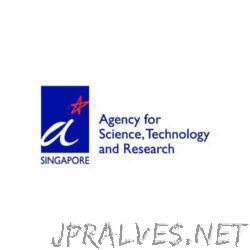Other

“Researchers from A*STAR’s NanoBio Lab (NBL) have designed a semi-solid electrolyte for lithium-sulfur batteries that improves their safety without compromising their performance.[1] This promising breakthrough paves the way for lithium-sulfur batteries to be used as efficient power …
“Silicon nanoparticles dispersed in solution can be positioned by light and printed onto surfaces, or used in applications such as medical imaging and drug delivery. The darling element of electronic devices, silicon can be found in all mobile phones and …

“A*STAR researchers have developed a method to generate large monolayer crystals of molybdenum disulfide for use in scaled-down and flexible electronics. Electronic devices are becoming smaller in size, yet the number of functions each gadget can perform is constantly …

“By integrating nanoantennas with liquid crystals, A*STAR researchers have created a metasurface that allows fine dynamic control over the properties of light. From holograms to augmented reality devices and optical sensors, a common enabling principle behind these innovations is …

“A metasurface whose optical properties change in response to electricity provides precise control over the reflection and transmission of radiation The ability to manipulate light on a subwavelength-scale could lead to a revolution in photonic devices such as antennas, solar …

“Nanowires that form and disperse as the temperature changes form the basis of a robust thermochromic liquid A smart liquid that darkens dramatically in response to rising temperature has been developed by researchers at A*STAR. The nanowire-based thermochromic liquid …

“A powerful machine-learning technique enables biologists to analyze enormous data sets Researchers at A*STAR have compared six data-analysis processes and come up with a clear winner1 in terms of speed, quality of analysis and reliability. The top performer took …

“Hierarchical microstructure improves the performance of metallic material Additive manufacturing, also called 3D printing, is commonly used to build complex three-dimensional objects, layer by layer. A*STAR researchers have shown that the process can also help to make a high-performance …

“Odorless route to polymeric delivery systems is safer and cheaper An affordable, heavy metal- and odor-free method for making hollow polymer nanostructures has been designed by A*STAR researchers. These structures could find use as delivery systems for personal care …

“Four organic thermoelectric polymers identified using theoretical calculations could prove valuable for harvesting energy from waste heat The mantra ‘reduce, reuse, recycle’ is increasingly pertinent. Every year, vast amounts of energy that could be captured and reused is lost through …

